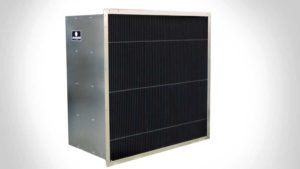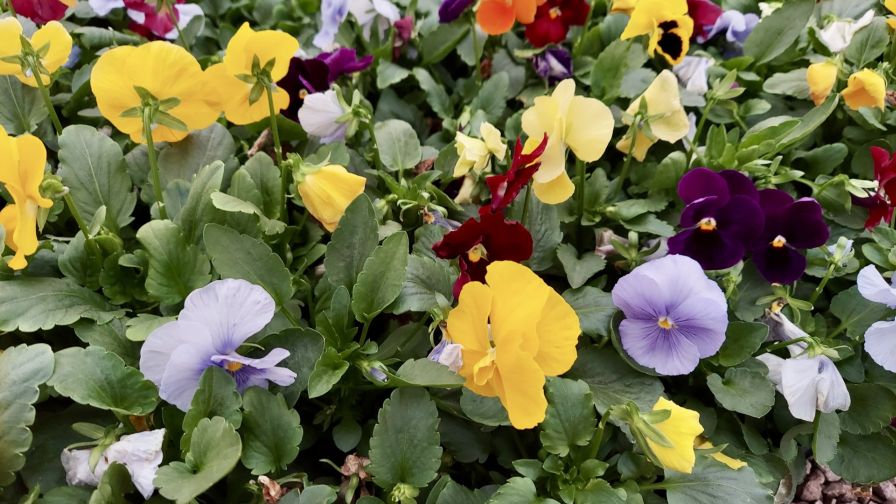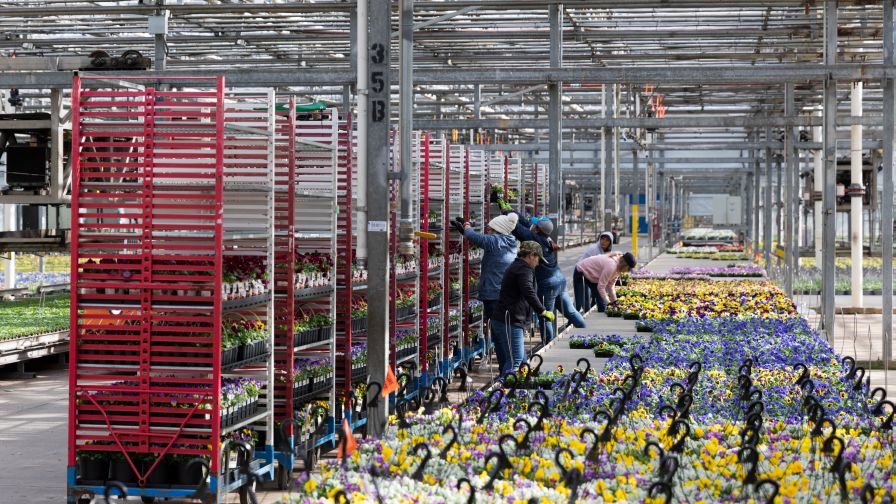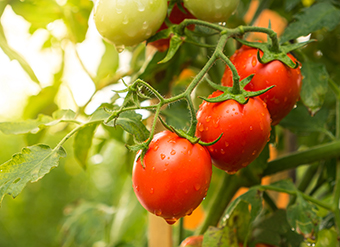What’s New In Greenhouse Cooling

Schaefer’s belt-drive light trap exhaust fans help maintain optimum humidity and air quality levels in the greenhouse.
Cooling and ventilation companies, as well as structures suppliers, are working to help growers manage efficiencies. Here are some of their latest innovations.
Exhaust Fans Help Maintain Humidity And Air Quality
Growers today are looking for energy efficiency and quality in their cooling equipment, says Tammy Mohs, Marketing Manager at Pinnacle Climate Technologies. This includes everything from exhaust fans to circulation fans to evaporative cooling.
Schaefer’s belt-drive light trap exhaust fans are designed to effectively maintaining optimum humidity and air quality levels, essential for productive growing conditions. They are specially designed to accommodate industry-standard light trapping pads. When used in tandem with the fan’s unique design, this will create a 100% effective barrier against natural light, allowing growers to precisely control growth cycles.
Return On Investment Is Critical
The fundamentals of cooling and ventilation are tried and true, so the methods used over the years haven’t really changed, says Justin Shelton, Vice President of Sales at Stuppy, Inc., and President-Elect of the National Greenhouse Manufacturers Association. The external environment, crops, and return on investment from the grower determine ventilation method and greenhouse design.
Cooling and ventilation today utilizes some combination of natural ventilation or mechanical ventilation with shading. Natural ventilation i.e. roll up curtains, roof vents, and open roof designs utilizes openings in the greenhouse to allow outside air to ventilate the facility.
“In hydroponics we have seen some growers chilling their water in order to give their water to help their crops stay cool,” Shelton says. “Depending on the crop selection, growers have seen good results with this method to supplement their primary method of ventilation.”
There are other methods for cooling and ventilation, but Shelton says the reality is that growers are faced with a business choice and must justify the cost for any technology they utilize.
“By the time growers do the math, they typically land on either evaporative cooling and exhaust fans or natural ventilation. They then supplement those methods with shade systems as needed.”
The Half Open Roof Design Helps With Ventilation
Many growers are concerned about maximizing greenhouse ventilation, says Richard Hebbourn, Business Development Manager at GGS Structures. In some maximum ventilation designs, condensation control is sacrificed and dripping becomes an issue.
This was the case for Hendriks Greenhouses in Beamsville, ON, Canada, which wanted a design that balanced both ventilation and condensation control. Hendriks recently cooperated with GGS on the development of such a structure.
“Having worked with GGS over the years with a gutter-vented greenhouse, we knew it was possible to work with them and get a dry open-roof house as well,” says Craig Barlow, Operations Manager at Hendriks Greenhouses.
GGS created the open-roof design in response to growers’ increasing concerns about ventilation with drip control. “The GGS half open-roof greenhouse design provides an optimal system to maximize ventilation while maintaining a smooth surface on the poly and good roof pitch for condensation control,” says Michael Camplin, Sales Manager at GGS. “This design ultimately results in exceptional condensation control. Additionally, we built a 4-inch gutter inside the greenhouse to collect any condensation that could potentially come through the ridge.”
This structure also has other features to ensure the longevity of the greenhouse. The gable ends include venting and are made of long-lasting acrylic. Also built into this new greenhouse is an in-floor heating system, where the concrete floor is used as a radiant surface to deliver heat directly to the plants and irrigation water.










